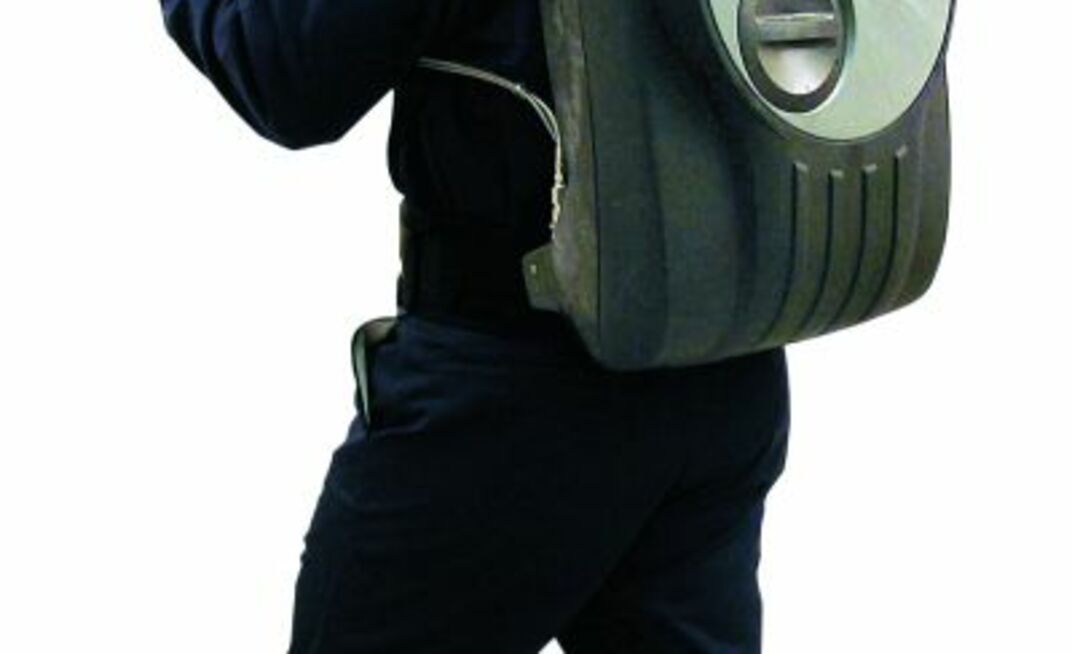Published in the August 2006 American Longwall Magazine
Company product manager Doug Anderson said the true innovation of the Biopak 240 Revolution was its design. “[It] is not the first four-hour unit on the market or the only one. It is, however, the most advanced and in a league by itself.”
Biomarine, established in 1969 to produce self-contained breathing apparatus (SCBA) for aerospace and marine applications, is a division of safety and environmental outfit Neutronics, which produces products for the industrial, government and military sectors, among others and has solidified its reputation since its 1976 inception in the area of oxygen analyzers.
The unit, said Neutronics chief operating officer Gary Halpern, is also true to its name through the innovation employed in its design. “Biomarine was the first company to pioneer positive pressure, closed circuit, self-contained breathing apparatus”, which he said the company refers to as “a new benchmark in long-duration SCBA”
Several features specific to the needs of the industry seem to have been met by the unit, the housing of which is made of stainless steel reinforced polymer – necessary in the harsh mining environment. Coming in at a 6-liter tidal volume, it contains disposable solid carbon dioxide scrubbers and has a low breathing resistance – the lowest of any other unit out there, the company said.
Ergonomics, safety and user comfort were also taken into account when the unit was being developed, which the company obtained (and carried into research and development efforts) from its collaborations with experts and a focus group. “We relied on their ideas throughout our design, engineering and field-testing phases. When all of the results were tallied and the conclusions were made, the focus group reported back that they wanted a re-breather that was easier breathing, easier to deploy, easier to service, more comfortable, more safe and less costly to own and operate,” he said.
Biomarine looked to their collaborators along the way as well. The company joined forces with Brownlie Design of New York to determine and develop the most functional backpack design for the pack as well as the breathing apparatus units. After a series of prototype tests, they were ready to introduce the Biopak 240 Revolution to the industry in late May.
Halpern said all items that the focus groups gave feedback on were incorporated into the design of the unit, which is now undergoing approval evaluations, including fast, easy deployment of the unit when needed and a built-in scrubber. Delaware-based Micropore and Neutronics worked together on the latter to develop, Halpern said, an “ultimate solid scrubber design” for the packs – a design in which the CO2 scrubbing material involves no measuring, refilling or resealing – and noted that the scrubber design is unique to the industry.
“There is no dusting, no channeling, there is no ‘did I do it right’ – you cannot make a mistake with this, so it completely eliminates the potential of absorbent refilling mistakes.” He added the Biopak 240 Revolution allows such easy breathing that one focus group member inquired as to whether the unit was operating when donning the face piece, on which the company collaborated with Scott Health and Safety to develop for form-fitted use by any person, even those with facial hair.
The pack’s cooling canisters were designed with time efficiency and the environment in mind as well. The two canisters each pack takes are pre-filled with water, reusable and maintain their shape through repeated use. The canister changes can even be made while the unit is donned, allowing for continuous cool fresh air throughout the change and no loss of the unit’s positive pressure.
For user-friendly function and safety, the slim-profile, 33-pound unit is also is equipped with a colored gauge system that warns audibly and visually – red to warn the user of low oxygen supply levels, blue to remind the user to install the pack’s coolant cartridges, and green, which reflects correct and optimum use. The oxygen bottle actuation control is also “bump proof” to prevent accidental start-ups, but when the time comes for use the valve can be turned even with gloves. If damage to the gauge line should occur, a disconnect function is available to keep oxygen from escaping.
Halpern said the dependability of the Biopak 240 Revolution was an important aspect, and the unit’s simplistic design is part of that plan. Because fewer parts are used to make up the design, there is less chance for an interruption of service. In the event service is needed, the company has added a latch system to access the unit itself with just a few pins and nuts to remove the housing, he added.
Additionally, because mine emergencies are not without fire hazard, the use of rugged material was another issue met by Biomarine. All parts of the unit, from its hoses to its face piece and all outside materials, are designed to withstand a fire.
While the Biopak 240 Revolution is not yet commercially available, Biomarine is taking orders. They are available in several models depending on the end user, including Mine Safety and Health Administration, National Institute for Occupational Safety and Health and EN145/136 (unit and mask approvals required for Europe), and the company said it is planning a trade-in program for both existing Biopak packs and other brands.
























